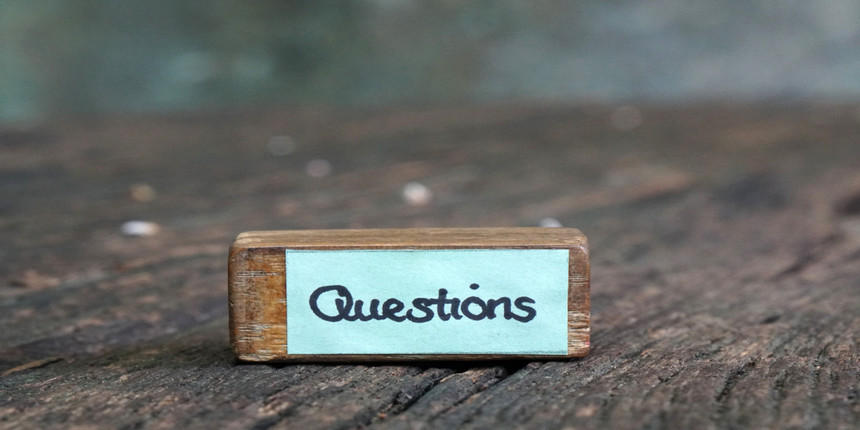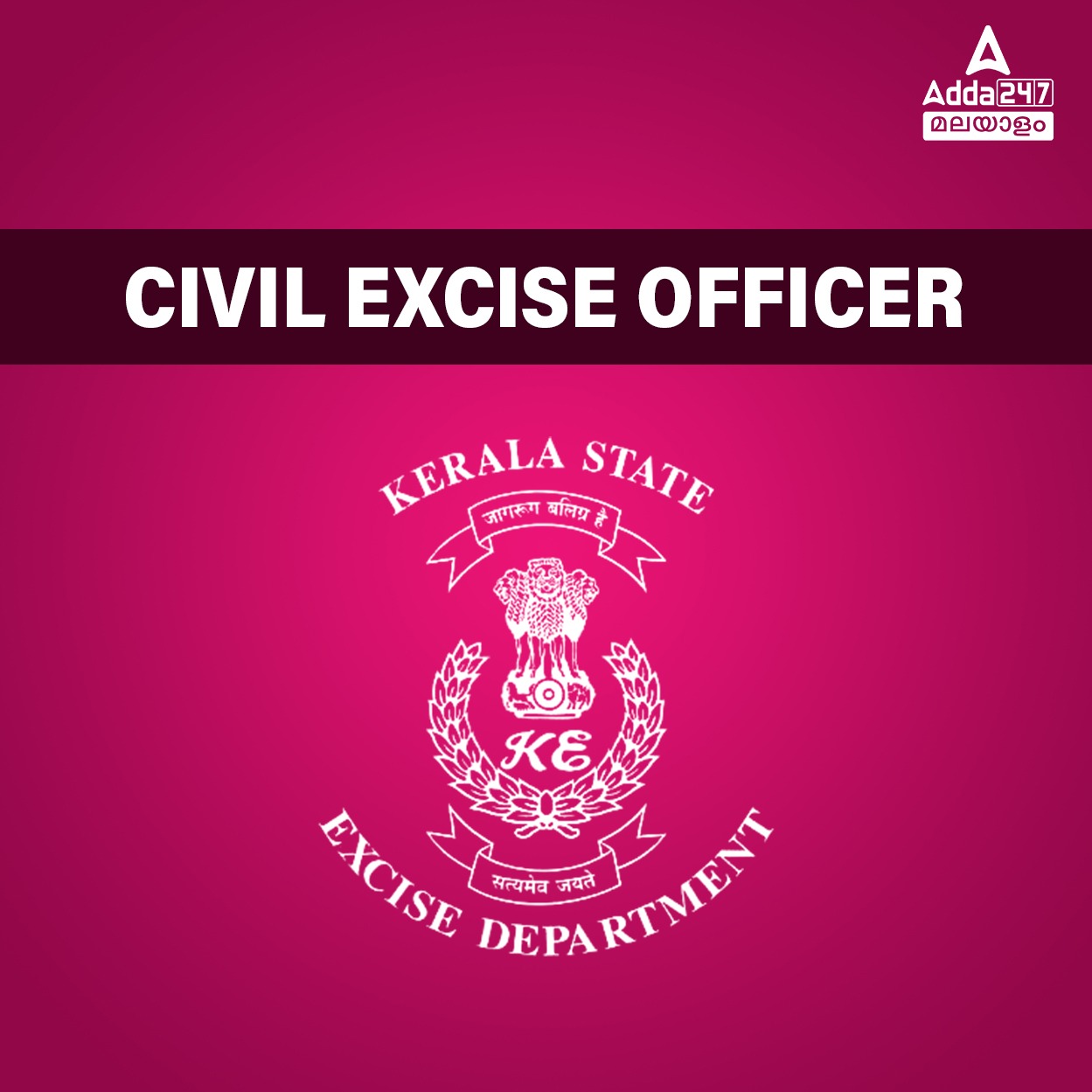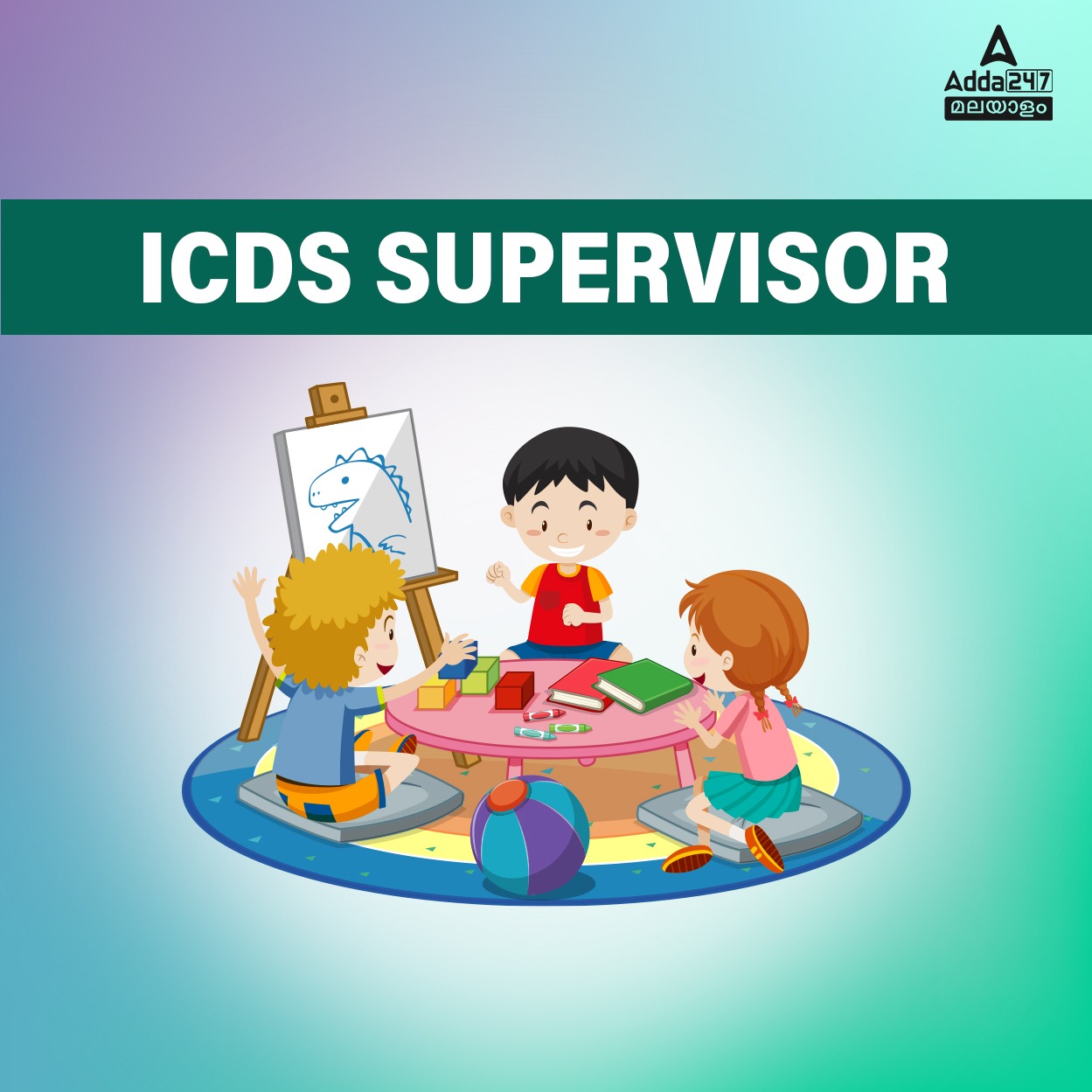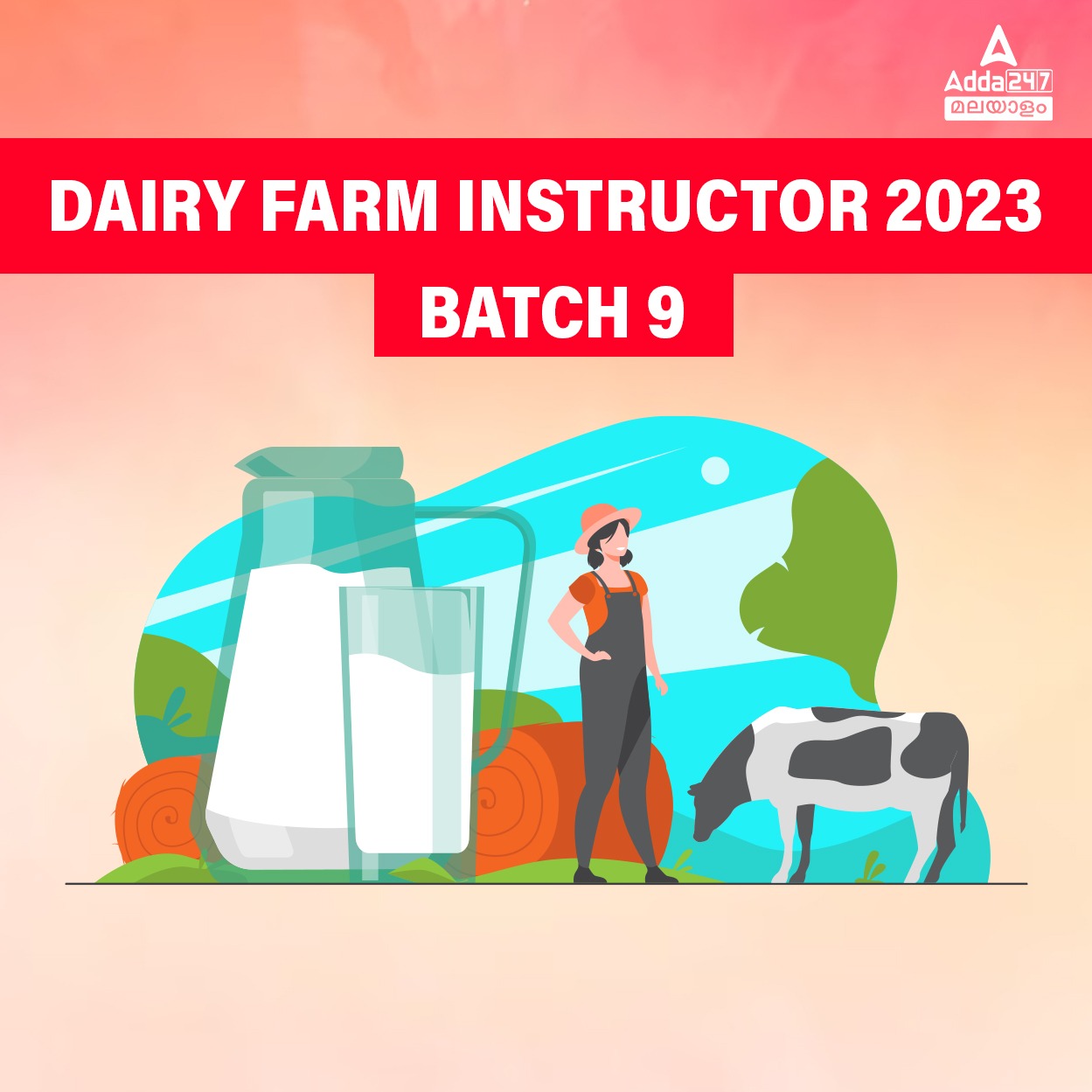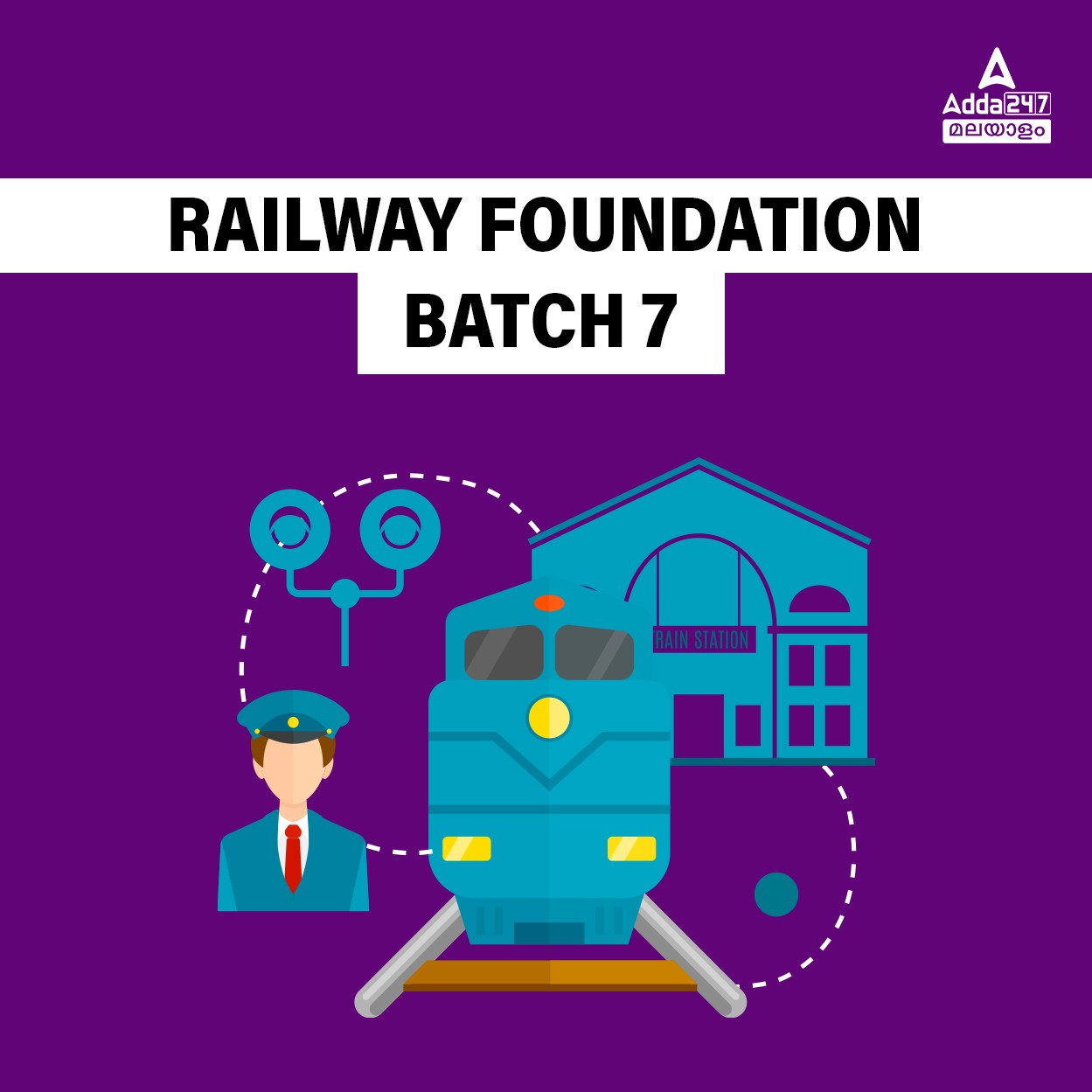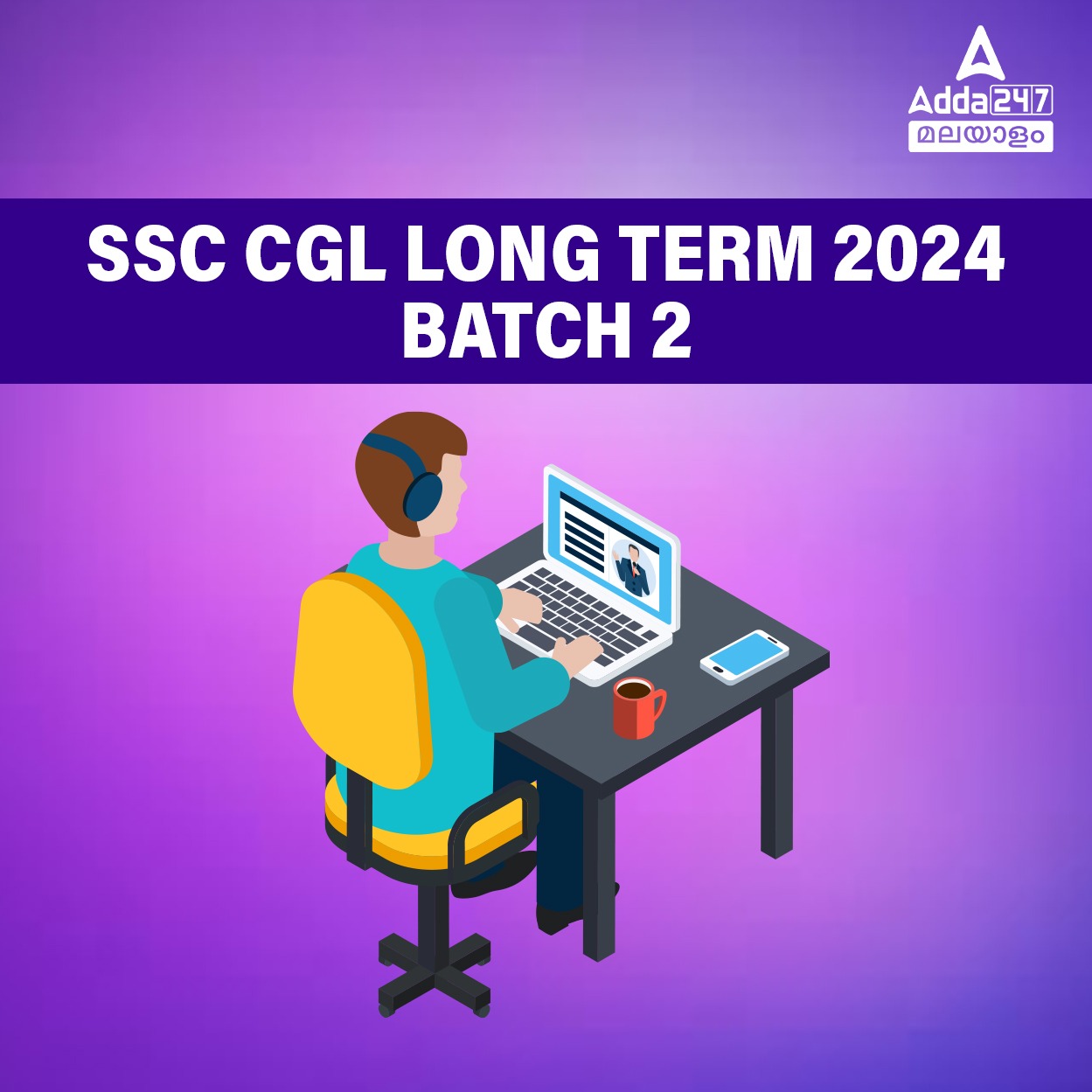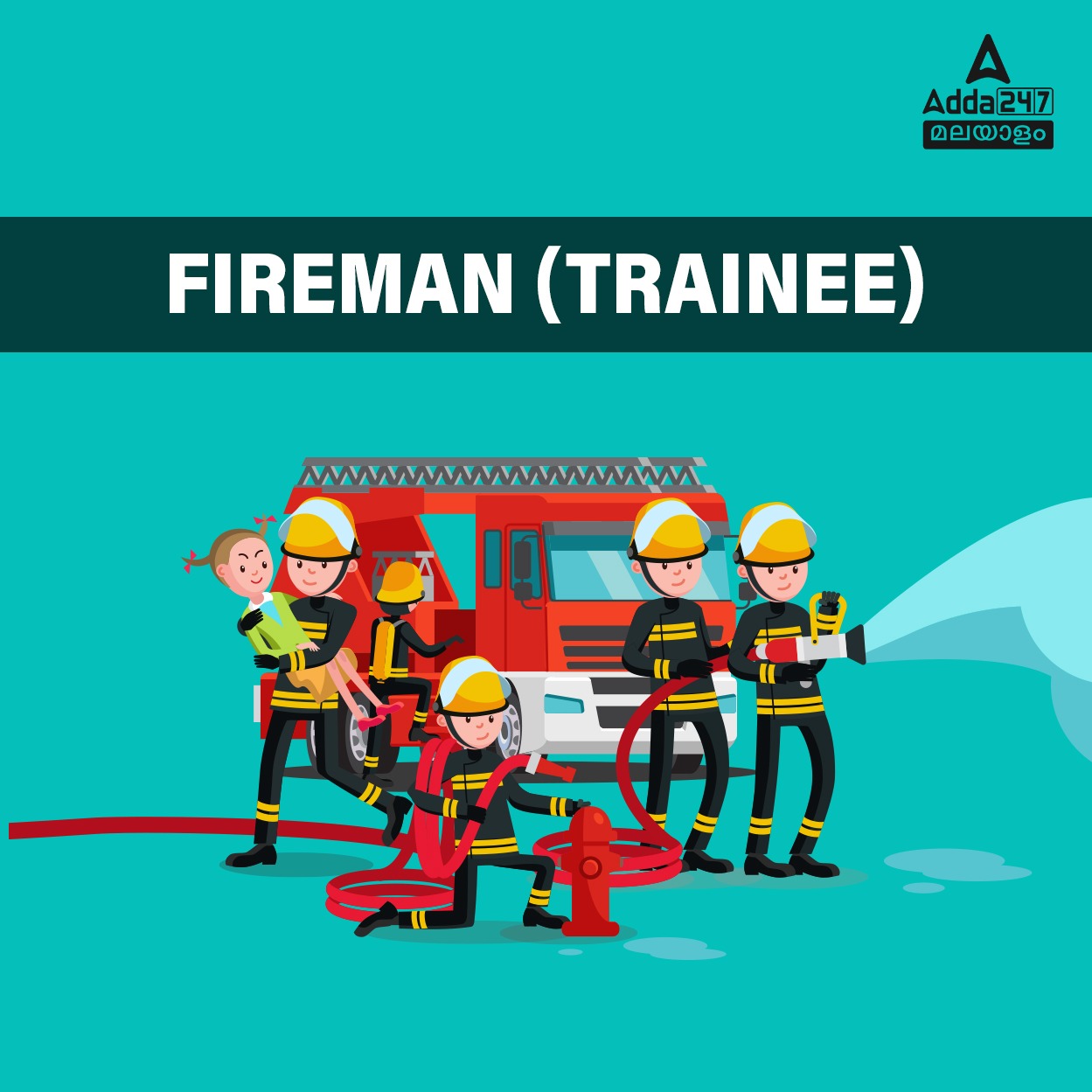Table of Contents
25 Important Previous year Q & A | Kerala Administrative Service Study Material [24 November 2021]: KAS പരീക്ഷകൾക്ക് വിജയം നേടാൻ ധാരാളം മുൻകാല ചോദ്യപേപ്പറുകൾ വിശകലനം ചെയ്യേണ്ടതുണ്ട്. KAS ലേക്ക് ഒരു ജോലി എന്ന സ്വപ്നം പൂവണിയാൻ ശ്രമിക്കുന്ന എല്ലാ ഉദ്യോഗാർത്ഥികൾക്കും ഇനി വരാൻ പോകുന്ന പരീക്ഷകളെ ധൈര്യത്തോടെ നേരിടാൻ ഞങ്ങളിതാ നിങ്ങൾക്കായി മുൻകാല വർഷങ്ങളിലെ ചോദ്യപേപ്പറുകളിൽ നിന്നും പ്രധാനപ്പെട്ട ചോദ്യങ്ങൾ തിരഞ്ഞെടുത്തു അവയുടെ ഉത്തരങ്ങളും വിശദീകരണത്തോടെ നൽകിയിരിക്കുന്നു. മുൻകാല വർഷങ്ങളിലെ 25 ചോദ്യങ്ങളും , അവയുടെ ഉത്തരങ്ങളും (25 Important Previous year Q & A) ചുവടെ കൊടുത്തിരിക്കുന്നു.
Fill the Form and Get all The Latest Job Alerts – Click here
[sso_enhancement_lead_form_manual title=”നവംബർ 2021 ആഴ്ചപ്പതിപ്പ് | സമകാലിക വിവരങ്ങൾ
November 3rd week” button=”ഡൗൺലോഡ് നൗ” pdf=”/jobs/wp-content/uploads/2021/11/22155326/Weekly-Current-Affairs-3rd-week-November-2021-in-Malayalam-1.pdf”]
Kerala Administrative Service Study Material: 25 Important Previous year Questions (25 ചോദ്യങ്ങൾ)
26. Consider the following statements :
1 .Globalization is an ongoing process starting from the dawn of civilization.
2. Some scholars find origins of globalization in the expansion of imperialism in Asia and Africa by European powers.
3. Globalization came about with the revolution in transport and communication technologies during 19th and 20th centuries.
4. The process of globalization was increasingly felt only in 1970s.
Which of the statements given above is/ are correct ?
(A) 1 and 2 only (B) 4 only (C) 2, 3 and 4 only (D) 1, 2, 3 and 4
- With reference to the Industrial Revolution in England, which one of the following statements is correct ?
(A) Guild System promoted Industrial Revolution.
(B) Greater production of goods resulted in end of factory system.
(C) Manufacturing methods also changed the methods of agriculture.
(D) None of the above.
- With reference to the politico-economic theory of Communism, which one of the following statements is not correct ?
(A) Marxist ideas of how to change the world was based on a scientific analysis of society through history.
(B) No society can be Socialist before having gone through the stages of Capitalism.
(C) Capitalism itself creates the conditions for the overthrow of the capitalist society.
(D) Karl Marx showed that the material bases of life never determine the nature of society.
- With reference to colonization, which one of the following statements is NOT correct?
(A) The ideology of Imperialism encourages conquest and colonial domination.
(B) Colonialism produces a dualistic society in which one sector is modern and capitalist while another sector is traditional and pre-capitalist.
(C) In colonial India, agriculture had no capitalist element.
(D) None of the above.
- With reference to the resolution on Partition Plan of Palestine State of 1947, which one of the following statements is correct ?
(A) Palestine was under French mandate System after the 1st World War.
(B) The Plan of Partition was recommended by the U.S.A. in 1947.
(C) After this resolution, a civil war broke out and the plan was not implemented.
(D) All the statements are correct.
- Consider the following statements :
1. In Kerala, the megaliths are burial sites.
2 Iron objects and pottery are the main items found from megalithic burials in Kerala.
3. Pattanam’ is a megalithic burial site.
Which of the above statement/s is/are not correct ?
(A) 1 only (B) 1, 2 and 3. (C) 3 only (D) All of the above
- Which among the following is not related with medicine in Kerala ?
(A) Matangaleela (B) Prakriya Sarvaswam
(C) Ashtanga Sareeram (D) Prayoga Samuchayam
- With reference to the temple architecture of Kerala, consider the following statements :
1. Pallava style of architecture influenced temple architecture in Kerala.
2. Koothambalam is an important feature of Kerala temple architecture.
3. Vimana is an important feature of Kerala temples.
Which of the above is/are not correct ?
(A) 1 only (B) 3 only (C) 1 and 2 only (D) 1, 2 and 3. 4.
- Consider the following :
Mampalli copper plate of Shri Vallabhan Kota is the first record that used Kollam Era.
Parthivapuram copper plate refers to the grants of land to ‘Salai’.
Jewish copper plate speaks of a grant to Joseph Rabban.
Which of the above statement/statements is/are correct ?
(A) 1 only (B) 1 and 3 only (C) 1, 2 and 3 (D) None of the above
- Consider the following pairs :
Work Author
- Kokila Sandesa Uddanda Sastrikal
- Ascharya Choodamani. Saktibhadra
- Bhashashtapathi Unnayi Varier
Which of the above pairs is/are correctly matched ?
(A) 1 only (B) 1 and 2 only
(C) 1, 2 and 3 (D) None of the above

- Which among the following palace is famous for its mural painting ‘Gajendramoksha’ ?
(A) Mattanchery Palace (B) Padmanabhapuram Palace
(C) Chirakkal Palace (D) Krishnapuram Palace
- With reference to caste system in Kerala, consider the following statements :
1. ‘Mannappedi’ and ‘Pulappedi’ were abolished by Sri Kerala Varma of Venad by issuing an order.
2. ‘Sankara Smriti’ is a text dealing with caste rules and practices.
3. ‘Channar’ agitation was a caste movement.
Which of the statement/statements is/are correct ?
(A) 1 only . (B) 2 only (C) 1, 2 and 3 (D) 1 and 3 only
- Consider the following :
1. Revathipattathanam was an annual scholarly assembly patronised by Zamorin of Calicut.
2. Kadannirikkal’ is an important aspect of Revathipattathanam.
3. Head of Payyur family was the chief juage of Revathipattathanam.
4. Which among the above statement/s is/are NOT correct ?
(A) 1 only (B) 2 only (C) 2 and 3 only (D) 1, 2 and 3
- With reference to the evolution of the Malayalam language, consider the following statement/s :
1 .The word ‘Jannal’ came to the Malayalam language from Portuguese.
2. ‘Diwan’ is a word that came to Malayalam from Arab language.
3. Samkshepa Vedartham’ is the first printed book in Malayalam.
Which of the above is/are correct ?
(A) 1 and 3 only (B) 1 and 2 only (C) 1, 2 and 3 (D) None of the above.
- Consider the following :
1 .‘Parahita’ system of astronomy existed in Kerala.
2. Katapayadi system employed letters to denote numbers.
3. ‘Laghubhaskareeya Vyakhya’ is an astronomical work.
4. Which among the above statement/s are correct ?
(A) 1 and 2 only (B) 1 and 3 only (C) 1, 2 and 3 (D) 2 and 3 only.
- Which one of the following statements about the Private Bill in Indian Parliament is NOT correct ?
(A) It is introduced by any Member of Parliament other than a Minister
(B) Its drafting is the responsibility of the member concerned
(C) Its rejection by the House has no implication on the parliamentary confidence in the government or its resignation.
(D) Its introduction in the House requires seven days’ notice.
- Which of the following statements are correct regarding the federalism of India ?
1 .Indian Federation is “an indestructible Union of destructible states”
2. Indian Federation is “an indestructible Union of indestructible states”
3. The term ‘federation’ has nowhere been used in the Constitution
4. The Parliament can make laws on any matter in the State List for implementing the international treaties, agreements or conventions
(A) 1, 3 and 4 (B) 2, 3 and 4 (C) 1, 2 and 3 (D) 1, 2 and 4
- Considering different schedules in the Constitution of India, which of the following pairs are correctly matched ?
1 .Fifth Schedule : Provisions relating to the administration and control of Scheduled Areas and Scheduled Tribes
2. Sixth Schedule : Allocation of seats in the Rajya Sabha to the States and Union Territories
3. Ninth Schedule : Acts and Regulations of the state legislatures dealing with land reforms and abolition of the Zamindari system .
4. Tenth Schedule : Provisions relating to the administration of tribal areas in the States of Assam, Meghalaya, Tripura and Mizoram
(A) 1, 2 and 3 (B)1, 3 and 4. (C) 1 and 3 only. (D) 1 and 4 only
- Which of the following statements relating to Right to Property in the Constitution of India is NOT correct today ?
1. Right to Property is a Constitutional Right
2. It is not a part of the basic structure of the Constitution
3. It protects private property against executive action but not against legislative action
4. In case of violation, the aggrieved person cannot move the High Court under Article 226.
(A) 2 and 3 (B) 3 and 4 . (C) Only 3 (D) Only 4
- In India, a Bill is not to be deemed to be a Money Bill, if it contains provision for —–
(A) the imposition, abolition, remission, alteration or regulation of any tax
(B) the imposition of fines or other pecuniary penalties, or the demand or payment of fees for licences or fees for services rendered
(C) the appropriation of money out of the Consolidated Fund of India
(D) the regulation of the borrowing of money by the Union Government.
- Which among the following statement is NOT correct regarding the election of the Vice-President of India ?
(A) The electoral college consists of both elected and nominated members of the Parliament
(B) The electoral college does not include the members of the State Legislative Assemblies
(C) The electoral college includes the elected members of the State Legislative Assemblies
(D) All doubts and disputes in connection with election of the Vice-President are inquired into and decided by the Supreme Court whose decision is final.
- Which one among the following is added to fundamental duties through the 86th Amendment Act, 2002 of the Indian Constitution ?
(A) who is a parent or guardian to provide opportunities for education to his child or, as the case may be, ward between the age of six and fourteen years
(B) to develop the scientific temper, humanism and the spirit of Inquiry and reform
(C) to protect and improve the natural environment including forests, lakes, rivers and wildlife, and to have compassion for living creatures
(D) to safeguard public property and to abjure violence.
- Which of the following pairs are correctly matched ?
1. Swaran Singh Committee : Fundamental Duties
2. Balwant Rai Mehta Committee : Three-tier system of Panchayati Raj Institutions
3. Rajamannar Committee : Two-tier system of Panchayati Raj Institutions
4. Ashok Mehta Committee : Centre-State relations
(A) 1, 2 and 4 (B) 1, 2 and 3 (C) 2 and 3 only (D) 1 and 2 only
- Which writ among the following is a command issued by the court to a public official asking him to perform his official duties that he has failed or refused to perform, which can also be issued against any public body, a corporation, an inferior court, a tribunal or government for the same purpose?
(A) Certiorari (B) Mandamus (C) Quo-Warranto (D) Habeas Corpus
- Considering the powers of Lok Sabha and Rajya Sabha in the Indian Parliament which of the following statement is NOT correct?
(A) A Money Bill can be introduced only in the Lok Sabha and not in the Rajya Sabha
(B) Rajya Sabha can only discuss the budget but cannot vote on the demands for grants
(C) Rajya Sabha and Lok Sabha have equal powers in the introduction and passage of ordinary Bills
(D) Only Lok Sabha has power in the introduction and passage of financial Bills involving expenditure from the Consolidated Fund of India.

Kerala Administrative Service Study Material: 25 Important Previous year Solutions (25 പരിഹാരങ്ങൾ)
- Ans. (D) 1, 2, 3 and 4
Soln. 1. Globalization is an ongoing process starting from the dawn of civilization. – correct
- Some scholars find origins of globalization in the expansion of imperialism in Asia and Africa by European powers. – correct
- Globalization came about with the revolution in transport and communication technologies during 19th and 20th centuries. – correct
- The process of globalization was increasingly felt only in 1970s. – correct
- Ans. (C) Manufacturing methods also changed the methods of agriculture.
Soln. The British Agricultural Revolution is considered one of the causes of the Industrial Revolution because improved agricultural productivity freed up workers to work in other sectors of the economy. In contrast, per-capita food supply in Europe was stagnant or declining and did not improve in some parts of Europe until the late 18th century. Industrial technologies that affected farming included the seed drill, the Dutch plough, which contained iron parts, and the threshing machine. Machine tools and metalworking techniques developed during the Industrial Revolution eventually resulted in precision manufacturing techniques in the late 19th century for mass-producing agricultural equipment, such as reapers, binders, and combine harvesters.
- Ans. (D) Karl Marx showed that the material bases of life never determine the nature of society.
Soln. Like the other classical economists, Karl Marx believed in the labor theory of value to explain relative differences in market prices. This theory stated that the value of a produced economic good can be measured objectively by the average number of labor hours required to produce it. In other words, if a table takes twice as long to make as a chair, then the table should be considered twice as valuable. Marx understood the labor theory better than his predecessors (even Adam Smith) and contemporaries, and presented a devastating intellectual challenge to laissez-faire economists in Das Kapital: If goods and services tend to be sold at their true objective labor values as measured in labor hours, how do any capitalists enjoy profits? It must mean, Marx concluded, that capitalists were underpaying or overworking, and thereby exploiting, laborers to drive down the cost of production.
- Ans. (C) In colonial India, agriculture had no capitalist element.
Soln. (A) The ideology of Imperialism encourages conquest and colonial domination. – correct
(B) Colonialism produces a dualistic society in which one sector is modern and capitalist while another sector is traditional and pre-capitalist. – correct
(C) In colonial India, agriculture had no capitalist element. – incorrect
- Ans. (C). After this resolution, a civil war broke out and the plan was not implemented.
Soln. (A) Palestine was under French mandate System after the 1st World War. – incorrect
When World War I ended in 1918, the British took control of Palestine. The League of Nations issued a British mandate for Palestine—a document that gave Britain administrative control over the region, and included provisions for establishing a Jewish national homeland in Palestine—which went into effect in 1923.
(B) The Plan of Partition was recommended by the U.S.A. in 1947. – incorrect
The United Nations Partition Plan for Palestine was a proposal by the United Nations, which recommended a partition of Mandatory Palestine at the end of the British Mandate. On 29 November 1947, the UN General Assembly adopted the Plan as Resolution 181 (II). The resolution recommended the creation of independent Arab and Jewish States and a Special International Regime for the city of Jerusalem. The Partition Plan, a four-part document attached to the resolution, provided for the termination of the Mandate, the progressive withdrawal of British armed forces and the delineation of boundaries between the two States and Jerusalem.
(C) After this resolution, a civil war broke out and the plan was not implemented. – correct
- Ans. (C) 3 only
Soln. 1. In Kerala, the megaliths are burial sites. – correct
2 Iron objects and pottery are the main items found from megalithic burials in Kerala. – correct
- Pattanam’ is a megalithic burial site. – incorrect
Pattanam is a village located in the Ernakulam District in the southern Indian state of Kerala. It is located 2 km north of North Paravur, 6 km and East of Chendamangalam 25 km north of Kochi (Cochin). A branch of the Kanjirapuzha, called the Kanjirapuzha Thodu (Kanjirapuzha canal), runs close to Pattanam. Satellite imagery, a clear geological evidence, indicated that the old name of Pattanam is Pashnam. Moreover, the residents of Pattanam regularly used to find a large amount of broken pottery shards and ancient fired bricks while digging the ground. The Pattanam old name is Pashnam.And the junction of Pattanam is called Pashnam kavala. The excavations suggest that the site was first occupied by the indigenous “Megalithic” (Iron Age) people, followed by the Roman contact in the Early Historic Period. It appears that the site was continuously occupied at least from the 2nd century BC to the 10th century AD.
- Ans. (B) Prakriya Sarvaswam
Soln. Melputtur Narayana Bhattatiri, third student of Achyuta Pisharati, was a member of Madhava of Sangamagrama’s Kerala school of astronomy and mathematics. He was a mathematical linguist (vyakarana). His most important scholarly work, Prakriya-sarvasvam, sets forth an axiomatic system elaborating on the classical system of Panini. However, he is most famous for his masterpiece, Narayaneeyam, a devotional composition in praise of Guruvayoorappan (Krishna) that is still sung at Guruvayoor Temple. The book Prakriya Sarvaswam presents an elaboration of and an alternative to Panini’s axiomatic theory of grammar
- Ans. (B) 3 only
Soln. 1. Pallava style of architecture influenced temple architecture in Kerala. – correct
- Koothambalam is an important feature of Kerala temple architecture. – correct
- Vimana is an important feature of Kerala temples. – incorrect
Vimana is the structure over the garbhagriha or inner sanctum in the Hindu temples of South India and Odisha in East India. In typical temples of Odisha using the Kalinga style of architecture, the vimana is the tallest structure of the temple, as it is in the shikhara towers of temples in West and North India. By contrast, in large South Indian temples, it is typically smaller than the great gatehouses or gopuram, which are the most immediately striking architectural elements in a temple complex. A vimana is usually shaped as a pyramid, consisting of several stories or tala. Vimana are divided in two groups: jati vimanas that have up to four tala and mukhya vimana that have five tala and more. In North Indian temple architecture texts, the superstructure over the garbhagriha is called a shikhara. However, in South Indian Hindu architecture texts, the term shikhara means a dome-shaped crowning cap above the vimana.
- Ans. (C) 1, 2 and 3
Soln. 1. Mampalli copper plate of Shri Vallabhan Kota is the first record that used Kollam Era. – correct
- Parthivapuram copper plate refers to the grants of land to ‘Salai’. – correct
- Jewish copper plate speaks of a grant to Joseph Rabban. – correct
- Ans. (B) 1 and 2 only
Soln. 1. Kokila Sandesa – Uddanda Sastrikal – correctly matched
- Ascharya Choodamani. – Saktibhadra – correctly matched
- Bhashashtapathi Unnayi Varier – incorrectly matched
Jayadevan’s epic poem Geethagovindam, translated into Malayalam by eminent poet Ramapurath Varier, edited with a foreword by O N V Kurup. This edition also has a number of elegant line sketches by Eswaran Namboothiri. ‘Bhashashtapadi’ delineates the love of Krishna, as a cowherd, for Radha, the milkmaid, his faithlessness and subsequent return to her, and is taken as symbolical of the human soul’s straying from its true allegiance but returning at length to the God which created it.

- Ans. (D) Krishnapuram Palace
Soln. The Krishnapuram Palace is a palace and museum located in Kayamkulam near Alappuzha in Alappuzha district, Kerala in southwestern India. It was built in the 18th century by Anizham Thirunal Marthanda Varma (1729–1758 AD), the Travancore kingdom. It is built in the architectural style of Kerala with gabled roof, narrow corridor and dormer windows, near the Krishnaswamy Temple at Krishnapuram. The palace is maintained by the Kerala State Department of Archaeology and contains exhibits that belonged to the Palace and its former occupant, the Travancore Maharaja Marthanda Varma. It is also famous for a large pond within the palace complex. It is also said that an underground escape route runs from the bottom of the pond as a possible escape route from enemies. Among the many Kerala-style paintings seen in the palace, a distinctly placed mural painting is titled “Gajendra Moksham” of 154 square feet (14.3 m2) size, which is said to be the largest such find in Kerala. It is placed on the western end of the ground floor of the palace.
- Ans. (C) 1, 2 and 3
Soln. 1. ‘Mannappedi’ and ‘Pulappedi’ were abolished by Sri Kerala Varma of Venad by issuing an order. – correct
- ‘Sankara Smriti’ is a text dealing with caste rules and practices. – correct
- ‘Channar’ agitation was a caste movement. – correct
- Ans. (B) 2 only
Soln. 1. Revathipattathanam was an annual scholarly assembly patronised by Zamorin of Calicut. – correct
- ‘Kadannirikkal’ is an important aspect of Revathipattathanam. – not correct
Kadavallur Anyonyam is a Rig Veda debate held annually at Kadavallur in Thrissur. In Kerala, only the Rig Veda used to have an institutionalised teaching system. The Yajur and Sama Vedas were traditionally taught in Namboothiri homes. Anyonyam represents the meeting of two major Rig Veda practitioner groups based in Thirunavaya Math and Brahswom Math, which were once patronised by the Zamorin and Cochin kings respectively. While it is prestigious to have come out of the three tests successfully, to enter the Kadannirikkal and Valiya Kadannirikkal, the higher tests, are really challenging. The sitting postures of the two opponents, who face each other during these feats, are suggestive of the higher levels to which the competitions are carried out in this unique exercise.
- Head of Payyur family was the chief juage of Revathipattathanam. – correct
- Ans. (C) 1, 2 and 3
Soln. 1. The word ‘Jannal’ came to the Malayalam language from Portuguese. – correct
- ‘Diwan’ is a word that came to Malayalam from Arab language. – correct
- Samkshepa Vedartham’ is the first printed book in Malayalam. – correct
- Ans. (C) 1, 2 and 3
Soln. 1. ‘Parahita’ system of astronomy existed in Kerala. – correct
- Katapayadi system employed letters to denote numbers. – correct
- ‘Laghubhaskareeya Vyakhya’ is an astronomical work. – correct
- Ans. (D) Its introduction in the House requires seven days’ notice.
Soln. Private Bill – It can be introduced by any member of the parliament other than a minister. It reflects the mood of the political party on the public matter. It is less likely to be passed by the parliament. Its rejection by the house has no implication on the parliamentary confidence of the ruling party. Its introduction in the house requires one month. Its drafting is the responsibility of the members concerned.
- Ans. (A) 1, 3 and 4
Soln. 1. Indian Federation is “an indestructible Union of destructible states” – correct
- Indian Federation is “an indestructible Union of indestructible states” – incorrect
Article 1(1) of the constitution of India says that “India, that is Bharat, shall be Union of States”. The word Union was deliberately chosen in place of Federation to indicate that Indian Union is not the result of an agreement between states (which can be broken at whim) and its component states have no freedom to secede from it. Thus, while states can be broken, reorganized by alternation of boundaries, the country is a union which cannot be broken. Central Government can change the name, boundaries of the states without their permission also. That is why Dr. B R Ambedkar called India as an “indestructible Union of destructible states”.
- The term ‘federation’ has nowhere been used in the Constitution – correct
- The Parliament can make laws on any matter in the State List for implementing the international – correct
- Ans. (C) 1 and 3 only
Soln. 1. Fifth Schedule : Provisions relating to the administration and control of Scheduled Areas and Scheduled Tribes – correctly matched
- Sixth Schedule : Allocation of seats in the Rajya Sabha to the States and Union Territories – incorrectly matched
Sixth Schedule : It protects tribal populations and provides autonomy to the communities through creation of autonomous development councils that can frame laws on land, public health, agriculture and others. As of now, 10 autonomous councils exist in Assam, Meghalaya, Tripura and Mizoram. This special provision is provided under Article 244(2) and Article 275(1) of the Constitution.
- Ninth Schedule : Acts and Regulations of the state legislatures dealing with land reforms and abolition of the Zamindari system . – correctly matched
- Tenth Schedule : Provisions relating to the administration of tribal areas in the States of Assam, Meghalaya, Tripura and Mizoram – incorrectly matched
The 10th Schedule of the Indian Constitution contain Provisions relating to disqualification on the ground of defection. It was included under the 52nd Constitution Amendment Act, also called Anti Defection Act (1985). Previously Indian Constitution had 22 parts, 8 Schedules, and 395 Articles, but presently, the Constitution had 12 Schedules, 448 Articles, and 25 Parts.
- Ans. (D) Only 4
Soln. 1. Right to Property is a Constitutional Right – correct
- It is not a part of the basic structure of the Constitution – correct
- It protects private property against executive action but not against legislative action – correct
- In case of violation, the aggrieved person cannot move the High Court under Article 226. – incorrect
Article 19(1)(f) provides the freedom to citizens to acquire, hold, and dispose of the property within the territory of India. But by the Constitutional 44th Amendment act 1978, these two above mentioned articles were deleted and a new chapter IV was added in Part XII, containing only one article 300A. The legal status of the Right to Property was changed from the fundamental right to constitutional right. As a result, people were not allowed to approach Supreme Court directly u/A 32 of the constitution for violation of the Right to Property although they still could invoke jurisdiction at high court u/A 226 of COI.
- Ans. (B) the imposition of fines or other pecuniary penalties, or the demand or payment of fees for licences or fees for services rendered
Soln. In India, a Bill is not to be deemed to be a Money Bill, if it contains provision for the imposition of fines or other pecuniary penalties, or the demand or payment of fees for licences or fees for services rendered
A Bill shall not be deemed to be a Money Bill by reason only that it provides for the imposition of fines or other pecuniary penalties, or for the demand or payment of fees for licences or fees for services rendered, or by reason that it provides for the imposition, abolition, remission, alteration or regulation of any tax by any local authority or body for local purposes. If any question arises whether a Bill is a Money Bill or not, the decision of the Speaker of the House of the People thereon shall be final. There shall be endorsed on every Money Bill when it is transmitted to the Council of States under article 109, and when it is presented to the President for assent under article 111, the certificate of the Speaker of the House of the People signed by him that it is a Money Bill.
- Ans. (C) The electoral college includes the elected members of the State Legislative Assemblies
Soln. The Vice President is elected indirectly, by an electoral college consisting of members (elected as well as nominated) of both houses of the Parliament, in accordance with the system of proportional representation by means of the single transferable vote and the voting in such election is by secret ballot. The election of the Vice President is slightly different from the election of the President as the members of state legislatures are not part of the electoral college but the nominated members of both the houses are part of electoral college for the vice presidential election. The nomination of a candidate for election to the office of the Vice President must be subscribed by at least 20 electors as proposers and 20 electors as seconders. Every candidate has to make a security deposit of ₹15,000 (US$200) in the Reserve Bank of India.
- Ans. (A) who is a parent or guardian to provide opportunities for education to his child or, as the case may be, ward between the age of six and fourteen years
Soln. The 86th amendment to the constitution of India in 2002, provided Right to Education as a fundamental right in part-III of the Constitution. The same amendment inserted Article 21A which made Right to Education a fundamental right for children between 6-14 years. The 86th amendment provided for a follow-up legislation for Right to Education Bill 2008 and finally Right to Education Act 2009.
- Ans. (D) 1 and 2 only
Soln. 1. Swaran Singh Committee : Fundamental Duties – correctly matched
- Balwant Rai Mehta Committee : Three-tier system of Panchayati Raj Institutions – correctly matched
- Rajamannar Committee : Two-tier system of Panchayati Raj Institutions – incorrectly matched
A Centre-State Relations Inquiry Committee was set up by the then DMK Government of Tamil Nadu on 2nd September, 1969 under the Chairmanship of Dr. P.V. Rajamanar to consider the entire question regarding relationship that should subsist between the Centre and the States in a federal set up. The Committee in its report recommended that “the Inter-State Council should be constituted immediately” and that “no decision of national importance or which may affect one or more States should be taken by the Union Government except after consultation with the Inter-State Council”.
- Ashok Mehta Committee : Centre-State relations – incorrectly matched
The appointment of the Ashok Mehta Committee in 1977 did bring new thinking in the concepts and practice of the Panchayat Raj. The committee recommended a two-tier Panchayat Raj institutional structure consisting of Zilla Parishad and Mandal Panchayat. In December 1977, the Janata Government appointed a committee on Panchayati Raj institutions under the chairmanship of Ashoka Mehta. The committee submitted its report in August 1978 and made 132 recommendations to revive and strengthen the declining Panchayati Raj system in the country. As a result of this report, the Indian states of Karnataka, Andhra Pradesh, and West Bengal passed new legislation. However, the flow of politics at the state level did not allow the institutions to develop their own political dynamics.
- Ans. (B) Mandamus
Soln. Mandamus is a judicial remedy in the form of an order from a court to any government, subordinate court, corporation, or public authority, to do (or forbear from doing) some specific act which that body is obliged under law to do (or refrain from doing), and which is in the nature of public duty, and in certain cases one of a statutory duty. It cannot be issued to compel an authority to do something against statutory provision. For example, it cannot be used to force a lower court to reject or authorize applications that have been made, but if the court refuses to rule one way or the other then a mandamus can be used to order the court to rule on the applications. Mandamus may be a command to do an administrative action or not to take a particular action, and it is supplemented by legal rights. In the American legal system it must be a judicially enforceable and legally protected right before one suffering a grievance can ask for a mandamus. A person can be said to be aggrieved only when they are denied a legal right by someone who has a legal duty to do something and abstains from doing it.
- Ans. (D) Only Lok Sabha has power in the introduction and passage of financial Bills involving expenditure from the Consolidated Fund of India.
Soln. A Bill may be introduced in either House of Parliament. However,a Money Bill can not be introduced in Rajya Sabha.It can only be introduced in Lok Sabha with prior recommendation of the President for introduction in Lok Sabha. If any question arises whether a Bill is a Money Bill or not, the decision of the Speaker thereon is final. Rajya Sabha is required to return a Money Bill passed and transmitted by Lok Sabha within a period of 14 days from the date of its receipt. Rajya Sabha may return a Money Bill transmitted to it with or without recommendations. It is open to Lok Sabha to accept or reject all or any of the recommendations of Rajya Sabha. However, if Rajya Sabha does not return a Money Bill within the prescribed period of 14 days, the Bill is deemed to havebeen passed by both Houses of Parliament at the expiry of the said period of 14 days in the form in which it was passed by Lok Sabha.
ഇതര പരീക്ഷകളിലെ വാർത്തകൾ, തന്ത്രങ്ങൾ എന്നിവയ്ക്കായി ADDA247 മലയാളം പ്രോസസ്സർ ഡൺലോഡുചെയ്യുക
Download the app now, Click here
ഇത് നിങ്ങൾക്കുള്ള സമയമാണ്. പരീക്ഷയ്ക്ക് സ്വയം തയ്യാറാകാനുള്ള ഏറ്റവും അനുയോജ്യമായ സമയമാണിത്. നിങ്ങൾ വീട്ടിൽ നിന്ന് ഞങ്ങളോടൊപ്പം പരീക്ഷയ്ക്ക് തയ്യാറാകുക. മികച്ച കോഴ്സുകൾ, മികച്ച ഹെഡ് ട്രെയിനർമാർ, ലളിതമായ നിർദ്ദേശങ്ങൾ, ഗുണനിലവാരമുള്ള ക്വിസ് ചോദ്യങ്ങൾ ഞങ്ങൾ നിങ്ങൾക്ക് നൽകുന്നു. ഈ അത്ഭുതകരമായ സമയം പഠിക്കാൻ നിങ്ങൾക്ക് ബുദ്ധിമുട്ടുള്ള കോഴ്സിന്റെ ഭാഗങ്ങൾ ശക്തിപ്പെടുത്തുക. Mock Tests, Test series , E-Books , Daily Current Affairs, Weekly Current Affairs, Monthly Current Affairs എന്നിവയുടെ സൗജന്യ PDF കൾ അങ്ങനെ നിരവധി പഠന സാമഗ്രികൾ ഇംഗ്ലീഷിലും മലയാളത്തിലും (English & Malayalam) ADDA 247 നിങ്ങൾക്ക് നൽകുന്നു. സൗജന്യവും, പണമടച്ചുള്ളതുമായ ക്ലാസുകൾ ഞങ്ങൾ നിങ്ങൾക്ക് ലാഭകരമായ രീതിയിൽ വാഗ്ദാനം ചെയ്യുന്നു.
***വരാനിരിക്കുന്ന പരീക്ഷകളിൽ വിജയിക്കാൻ ഞങ്ങളോടൊപ്പം ചേരുക***
Use Coupon code- KPSC (എക്കാലത്തെയും വിലക്കുറവ്)
*മലയാളത്തിലെ തത്സമയ ക്ലാസുകൾ ഇപ്പോൾ നിങ്ങളുടെ വീട്ടിൽ ലഭ്യമാണ്*

*തിരഞ്ഞെടുക്കൽ മാത്രമേ പരിശീലനത്തിന് നിങ്ങളെ സഹായിക്കൂ | അഡാ 247-ൽ മലയാളത്തിൽ പരിശീലനം ആരംഭിക്കുക*
Telegram group:- KPSC Sure Shot Selection

